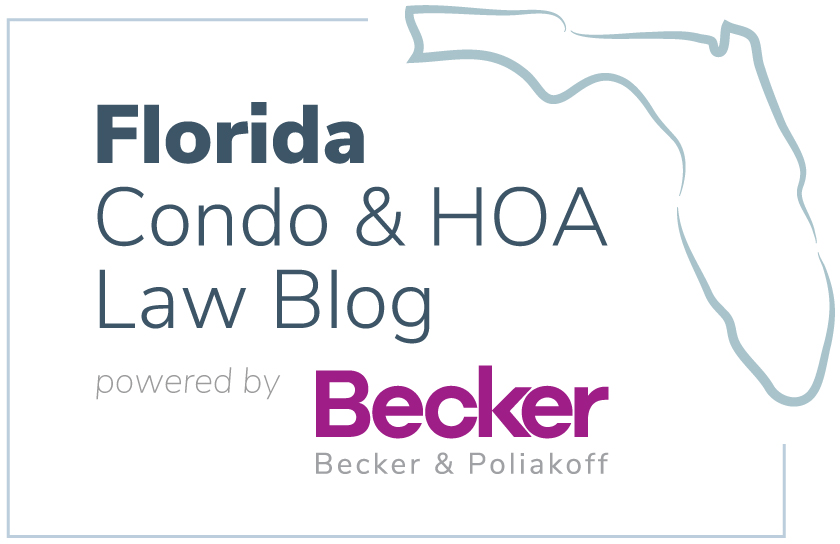
There is a lot of information on how associations can prepare for hurricanes but much less information as to what happens after the hurricane, particularly as it pertains to insurance claims. A question that managers and board members need to consider is, what is required after a hurricane to ensure compliance with your insurance policy and recover money which may be owed?
WHAT IS AN INSURANCE POLICY?
An insurance policy is a contract between you and the insurer, nothing more. Although this particular contract may be lengthy and hard to understand, courts treat this contract as it would other contracts. What did the parties agree to in the policy? Rights and remedies post-hurricane are those defined in the policy and any applicable statutes. Every policy is different, and the requirements in one policy may not exist in another. Obligations to provide notice of a claim, produce documents, sit for an examination under oath, or provide a sworn statement in proof of loss arise out of the insurance policy.
PROVIDING NOTICE OF THE CLAIM
Providing notice of the claim is the critical first step. Your policy will contain language such as “timely notice after the casualty,” “reasonable notice after the casualty,”or “within ‘X’ days of the casualty.” Know what the policy requires for notice, and where the notice should go. It is imperative that notice be provided to the insurance carrier as quickly as possible.
After receiving notice of the claim, the insurer may do several things. Hopefully the insurer steps in, investigates the claim, and provides funds to help the association start on the road to rebuilding and recovery. Unfortunately, that does not happen as often as we would like. The insurer may wish to investigate the loss by requesting documents, taking examinations under oath, and asking for a sworn statement in proof of loss. The policy requires cooperation in the investigation of the claim. Remember, what you perceive as delay will be argued by the insurer as a thorough investigation and evaluation.
DOCUMENTS, EXAMINATIONS UNDER OATH, AND SWORN STATEMENTS IN PROOF OF LOSS
The documents requested may include repair records, maintenance records, meeting minutes, financial statements, and a variety of other documents. The insurance company’s reason for wanting these documents is to establish what damages existed prior to the claim, if any, as well as to evaluate potential coverage issues.
The association is required to provide any documents that are responsive to the request. Each request should be reviewed and compared to association records to determine what exists and then produce them. This can be a very timeconsuming process as you may be dealing with voluminous information. It is not unusual to produce thousands of pages of documents. You may believe this is a waste of time and that the insurance company can evaluate the claim without those documents, but remember that the policy allows the insurer to request the documents and also requires the association to cooperate.
After receiving the documents, the insurer may ask for the examinations under oath of the insured. An examination under oath is essentially a deposition. The witness is placed under oath, and the attorney for the insurance company will ask a series of questions which the witness is required to answer, all of which is transcribed by a court reporter. It can be an intimidating process. If your association is represented by counsel, then counsel should be present as well.
The witnesses may include members of the board of directors and possibly consultants that the association has retained. Generally, the examination under oath is only required of the insured. However, where the insured does not know the technical details of the damages or repairs, producing consultants for an examination under oath may be necessary. In some cases, the insurer may ask to take the examinations of several board members, the manager, or consultants in order to evaluate the claim. What examinations are required under the policy is a fact specific determination.
The sworn statement in proof of loss is a significant trigger under most policies. The policy will contain language that within a set number of days after the proof of loss is submitted a coverage determination will be made. However, an insurer may sometimes not request one, or after receiving one, the insurer may state that the proof of loss is not sufficiently detailed as to trigger the policy requirement to make a coverage determination.
The proof of loss is the document which sets out what the value of the claim is. It is a very important document, and one which you should take very seriously. Although this docment may be prepared by a lawyer or a public adjuster, the association is the signatory. Once signed and submitted, the proof of loss represents what the insured is representing, under oath, is the amount owed to the association. Although the proof can be supplemented, accuracy is very important.
ALTERNATIVE DISPUTE RESOLUTION
The two primary ways to resolve an insurance claim without litigation are an appraisal or presuit mediation. The appraisal process is governed in the insurance policy itself, and he presuit mediation process is governed by the Division of Insurance.
An appraisal is essentially a binding arbitration proceeding which avoids the legal process. Many policies contain a provision for appraisals, which either party can invoke. An appraisal requires that each side pick an appraiser. They then meet and try to agree on the value of the claim. If they cannot agree, they select an umpire, who will issue a binding decision. Some policies require the umpire and one of the two appraisers agree on damage items before the process is binding. In other cases, the insurer may retain the right to deny the claim even after the appraisal award by finding no coverage existed under some policies.
The state has created a presuit mediation program to try to resolve insurance claims. Mediation is not a binding process, and there is resolution only if both sides agree to a resolution of the claim. The mediator cannot bind the parties nor make them agree to something the party does not wish to do. However, if both parties are interested in resolving the claim, mediation can be a useful tool to resolve claims, partially or wholly, without litigation.
LITIGATION
If you are forced to file suit, many issues need to be considered, such as venue, legal theories, basis for recovery, and the size and scope of the claim. These are all important considerations which should be considered with counsel. Also of high importance is the statute of limitations. Typically, an insured has five years from the date of denial of the claim to file suit. However, your policy may have language that attempts to shorten this limitations period. Generally, any contractual provision that shortens the limitations period is void.
The allegations in every case will vary based on the specific facts. However, the general claims are that the insurance company breached the contract by not timely adjusting or paying out on the claim. Other claims for failure of the insurer to comply with state statutes or for statutory bad faith may exist but would have to be considered on a case-by-case basis. Setting up the bad faith claims by going through the statutory Civil Remedy Notice process is part of this process.
If you find yourself in litigation against the insurer, then several defenses will be raised. The first one will be preexisting damage. Not covered. Also, the association failed to cooperate with the requirements under the policy, and therefore the insurer was relieved from paying. Whether an insured cooperated with the policy or not is a very fact specific issue. However, if the insurer can prove that the association failed to cooperate, then no payment is due under the policy. This is the reason that cooperation to the extent possible with the insurer’s investigation of the claim is important.
An insurer may allege fraud in the proof of loss, in examination under oath, or in the insurance application. If fraud is proven, then the entire claim may be reduced to zero. There is no room for exaggeration in pursuing your claim. The safest course of action is to be conservative in presenting the claim. This means taking care in the presentation of a proof, of being truthful in any testimony given, and understanding that presenting your claim improperly could have a negative impact on not just a small part of your claim but the whole claim.
CONCLUSION
In addition to claims against the insurance company for breach of the insurance contract, there may be claims against other parties as well. Given the size of the deductibles involved, there could be claims for construction defects as to the developer, general contractor, or other contractors, i.e., roofing company for an improperly constructed roof. There could also be significant litigation against parties who did repair work in which work was done improperly.
Remember, pursuing an insurance claim is not as easyas it sounds. We would all love for the insurance company to be presented with a claim and then simply write a check. However, the reality is that in sizeable claims the insurance company will use the policy to evaluate claims. The best advice for anyone making a claim is to be prepared, be accurate, and put together a team including counsel who understands such claims.


